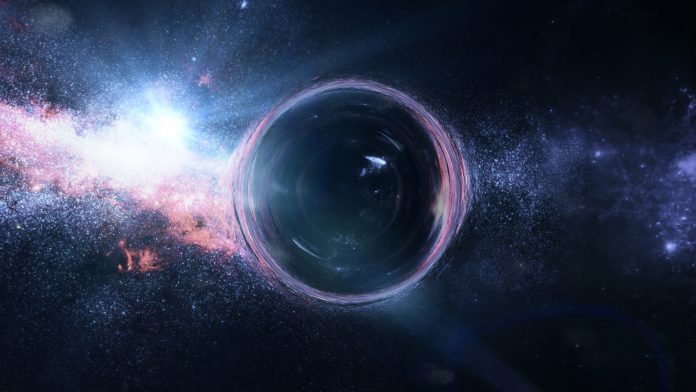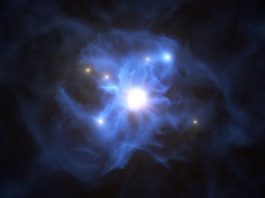Data from nineteen observatories are being released to give an unprecedented insight into the black hole in the M87 galaxy, and to improve tests of Einstein’s General Theory of Relativity.
Using the Event Horizon Telescope (EHT), in 2019, scientists were able to release the first image of a black hole in the galaxy M87. These latest observations give unparalleled understanding into this black hole and the system it powers.
“We knew that the first direct image of a black hole would be groundbreaking,” said Kazuhiro Hada of the National Astronomical Observatory of Japan, a co-author of the new study being published in the Astrophysical Journal Letters to describe the large set of data. “But to get the most out of this remarkable image, we need to know everything we can about the black hole’s behaviour at that time by observing over the entire electromagnetic spectrum.”
The immense gravitational pull of a black hole can power jets of particles that can travel at almost the speed of light across long distances. M87’s jets generate light spanning the entire electromagnetic spectrum. This pattern is different for each black hole. The ability to identify this pattern gives scientists crucial insight into a black hole’s properties, such as its spin and energy output. However, this is complicated, as the pattern changes with time.
The team overcame this challenge by co-ordinating observations with some of the most powerful telescopes in the world, on the ground and in space, collecting light from across the spectrum. This is the largest simultaneous observing campaign ever conducted on a supermassive black hole with jets.
Starting with the EHT’s ground-breaking image of the M87 blackhole, this new video goes through the data collected by each telescope. Each consecutive frame shows data across many factors of ten in scale, both of wavelengths of light and physical size. Each telescope delivers different information about the behaviour and impact of the 6.5-billion-solar-mass black hole at the centre of M87, which is located about 55 million light-years from Earth.
Co-author Daryl Haggard of McGill University commented: “There are multiple groups eager to see if their models are a match for these rich observations, and we’re excited to see the whole community use this public data set to help us better understand the deep links between black holes and their jets.”
The data were accumulated by a team of 760 scientists, from almost 200 institutions, spanning 32 countries or regions, and using observatories funded by agencies and institutions around the globe.
“This incredible set of observations includes many of the world’s best telescopes,” said co-author Juan Carlos Algaba of the University of Malaya. “This is a wonderful example of astronomers around the world working together in the pursuit of science.”
Along with future EHT observations, this data will allow researchers to conduct investigations into some of astrophysics’ most important fields of study. For example, scientists plan to use these data to improve tests of Einstein’s Theory of General Relativity.
Another area of research the data addresses is the question of the origin of energetic particles called ‘cosmic rays’, that continually bombard the Earth from outer space. The jets launched from black holes, like the ones shown in these recent images, are considered to be the most likely source of the highest energy cosmic rays, but there are many unanswered questions about details, such as the precise locations where the particles get accelerated.
“Understanding the particle acceleration is really central to our understanding of both the EHT image as well as the jets, in all their ‘colours’,” explained co-author Sera Markoff, of the University of Amsterdam. “These jets manage to transport energy released by the black hole out to scales larger than the host galaxy, like a huge power cord. Our results will help us calculate the amount of power carried, and the effect the black hole’s jets have on its environment.”
“With the release of these data, combined with the resumption of observing and an improved EHT, we know many exciting new results are on the horizon,” added co-author Mislav Baloković of Yale University.









